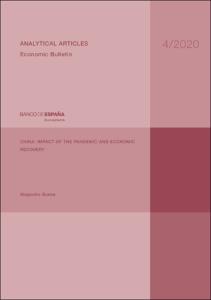China: impact of the pandemic and economic recovery
Authors
Issue Date
29-Oct-2020
Physical description
13 p.
Abstract
The favourable course of the pandemic from early March onwards prompted the Chinese government to gradually ease the most stringent measures taken to fight COVID-19 that had been in force since January, relaxing confinements at home and the restrictions on both mobility and the pursuit of economic and business activity. This article describes the main features of the phase of economic recovery in China so far in 2020. These notably include, in first place, the considerable progress already made in the economic recovery in the country as a whole, although it was initially more lagged in Hubei province, where the pandemic originated. Second, people’s movements have gradually returned to normal, reaching pre-crisis levels in early October. Third, industrial activity has seen a swift recovery, albeit one partially underpinned by temporary factors, such as supplying the demand of other economies with lockdown measures in force. Moreover, services activity, which requires a high degree of social interaction, still lags. Fourth, as regards spending, the consumption of durable goods has recovered more slowly, while the saving rate has increased, which could be attributable to precautionary motives. Lastly, the pandemic appears to have exerted overall downward pressure on inflation in the country as a whole. Nevertheless, it may not be possible to fully extrapolate the experience of China to other economies, owing to the combination of some specific factors, such as the health strategy pursued and, in the economic sphere, the temporary but notable support of the external sector through manufacturing exports.
Notes
Artículo de revista
Publish on
Economic Bulletin / Banco de España, 4/2020
Other versions
Subjects
China; COVID-19; Economic policies; Recovery; International economy; Structural analysis; Evolución y desarrollo económicos
Appears in Collections:












